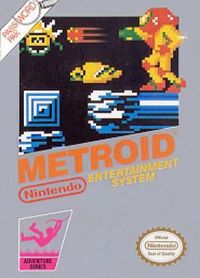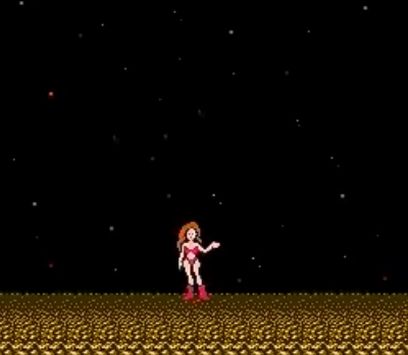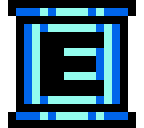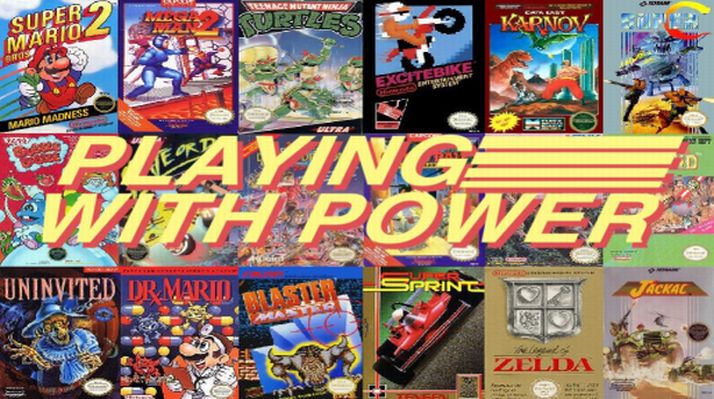 Welcome to another edition of Playing With Power. The review article that looks at all things Nintendo Entertainment System. Well, here we are at the 25th Playing With Power review. Crazy to think that we’ve already burned through a quarter of a hundred articles already, but you know what they say, time flies when you’re having fun. And speaking of fun, for the silver edition of this review series, we definitely need to look at one of the best games on the console. Not to mention a game that would spawn one of Nintendo’s best franchises of all time. No, we’re not delving into more Mario, and it’s not time yet to embark on a certain “Legend”. We’ll save them for some more special occasions. This week though, it’s time to review Metroid.
Welcome to another edition of Playing With Power. The review article that looks at all things Nintendo Entertainment System. Well, here we are at the 25th Playing With Power review. Crazy to think that we’ve already burned through a quarter of a hundred articles already, but you know what they say, time flies when you’re having fun. And speaking of fun, for the silver edition of this review series, we definitely need to look at one of the best games on the console. Not to mention a game that would spawn one of Nintendo’s best franchises of all time. No, we’re not delving into more Mario, and it’s not time yet to embark on a certain “Legend”. We’ll save them for some more special occasions. This week though, it’s time to review Metroid.
PUBLISHER: Nintendo
GENRE: Action Adventure
Nintendo had already proven their dominant strengths in the arcade, platformer, and adventure genres with games like Donkey Kong, Super Mario Bros, and The Legend of Zelda, but had yet to make their mark in the action shooter department. That was until Metroid was born. The game was produced by the legendary Gunpei Yokoi, and co-developed by Intelligent Systems and Nintendo’s Research and Development 1 division. The idea of Metroid was heavily inspired by Ridley Scott’s classic horror film Alien, and many of the enemies within the game were heavily inspired by H.R Giger’s creature designs.
Metroid was released in Japan in 1986, and in 1987 in North America. The game would sell 2.73 million units worldwide. It would rank 11th in Nintendo Power’s list of the top 200 games of all time, as well as later being listed as the 5th best NES game ever by the magazine. It would see a GBA remake in 2004 as “Metroid: Zero Mission”. It has also been re-released for the virtual console. The game has held its own with quite a strong legacy, but is most of that popularity deserved? Let’s review further.
COVER STORY
By 1987, Nintendo was starting to phase out the black box designs for their games. The last ones to really use this style were the three silver box designs. Metroid, Kid Icarus, and Rad Racer. And just like the boxes before it, this is a classic cover. Well designed, pleasing to the eye, and pretty much tells you enough of what you need to know about the game. It’s definitely a nice cover. But it wouldn’t be the only one Nintendo would use.
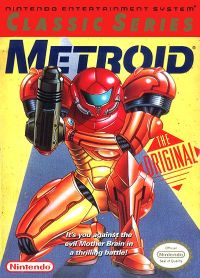 In 1991, Nintendo would re-release Metroid as part of the “Classic Series” along with Zelda II, and Punch Out! (without Mike Tyson). While I love the more vintage cover, this one is just epic. Samus looks amazing on this box, and it almost screams “buy me”. A great example of improving on something that was already awesome as it was.
In 1991, Nintendo would re-release Metroid as part of the “Classic Series” along with Zelda II, and Punch Out! (without Mike Tyson). While I love the more vintage cover, this one is just epic. Samus looks amazing on this box, and it almost screams “buy me”. A great example of improving on something that was already awesome as it was.
STORY
Evil space pirates, controlled by Mother Brain, have seized the Metroids, dangerous floating organisms that can latch on to anything, and drain their life energy. The galactic federation locate the hideout of the pirates on the planet of Zebes. They send a bounty hunter by the name of Samus Aran to traverse through the planet’s dangerous caverns to defeat the pirates, and destroy the devious Mother Brain.
GAMEPLAY
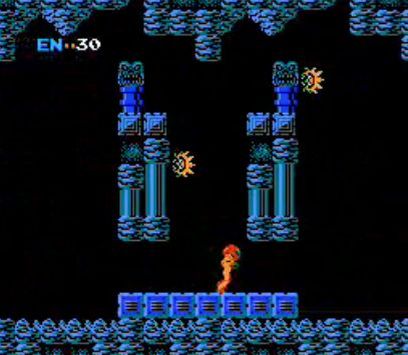 Metroid is a one player action shooter game. You control Samus Aran, a bounty hunter, who has to travel through the underground caverns of the planet Zebes to defeat the evil space pirates and their leader Mother Brain. You move Samus with the D-Pad, can jump with the A button, and use your weapon with the B button. You start with a basic low jump, and a short shot range. But as you advance through the game, and find the many hidden upgrades, you can improve on those abilities.
Metroid is a one player action shooter game. You control Samus Aran, a bounty hunter, who has to travel through the underground caverns of the planet Zebes to defeat the evil space pirates and their leader Mother Brain. You move Samus with the D-Pad, can jump with the A button, and use your weapon with the B button. You start with a basic low jump, and a short shot range. But as you advance through the game, and find the many hidden upgrades, you can improve on those abilities.
Before you can get to Mother Brain, you first have to dispose of her head guards Ridley and Kraid. But the road to them is a challenge in itself. You see, unlike most NES games at the time which followed a linear path in order to get from one point to another, Metroid is extremely maze-like. There are plenty of areas to search around, and even a few dead ends to deal with. Making a map (or getting one elsewhere) is definitely required for knowing not just where to face the bosses, but also find the items scattered throughout the game.
Zebes is broken into multiple areas. The dark and uninviting Brinstar where your journey begins, the scorching hot Norfair, where lava is abundant, the respective hideouts of Kraid and Ridley, and finally Tourian, the lair of Mother Brain, and the deadly metroids. Every areas is filled with twisting, turning locations, and doors leading to every which way. You’ll end up with a lot of backtracking, and a lot of trial and error as to what areas may hold the correct paths to the next destined area. Like I said, this game can be a chore to remember which ways are the best, and a map (or a really good memory) may definitely be helpful when working through this game.
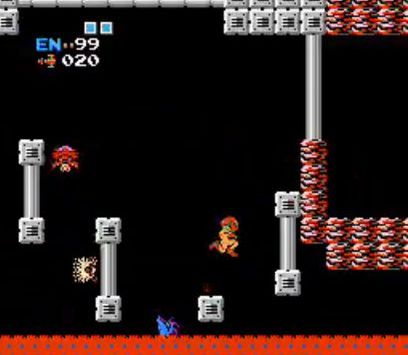 But thankfully, you don’t have to fight through this game with wonky weaponry. As you advance through the game, and head through the many doors within Zebes, you’ll find tons of weapons and upgrades to kelp you on your journey. The Morph Ball turns Samus into a rolling ball when you press the down button, and you can use it to roll yourself into harder to access areas. There’s the long jump, that increases your weak jumping.
But thankfully, you don’t have to fight through this game with wonky weaponry. As you advance through the game, and head through the many doors within Zebes, you’ll find tons of weapons and upgrades to kelp you on your journey. The Morph Ball turns Samus into a rolling ball when you press the down button, and you can use it to roll yourself into harder to access areas. There’s the long jump, that increases your weak jumping.
The long beam fixes your tiny shot issues. When you find the bombs, you can use them to blow up rocks that block your path, or are hiding hidden areas. Just go into morph ball, and press B to drop them. You can also use them to bounce your way into hard to access areas. The wave beam adds extra damaging shots to your gun, and the extremely useful ice beam will freeze enemies in place, and is essential in dealing with those pesky Metroids. There’s also the Screw Attack, which turns your jump into an electric buzzsaw that will destroy all enemies that come near.
The most common item you’ll encounter in the game are the missiles and E tanks. Missiles will be able to open the pesky red doors that won’t open with a regular weapon shot. They also can destroy metroids far easier. Every missile pack found in the game can give you 5 more missiles, and you can hold up to 255 in the game. You start the game with 99 hit points, and once they’re depleted (and trust me, that won’t take long) it’s game over. Thankfully, that’s where the energy tanks come into play. Each tank collected will add 100 hit points to your total. And considering how tough this game can get, especially when dealing with those pain in the butt metroids, you’ll definitely need to find each and every one of them.
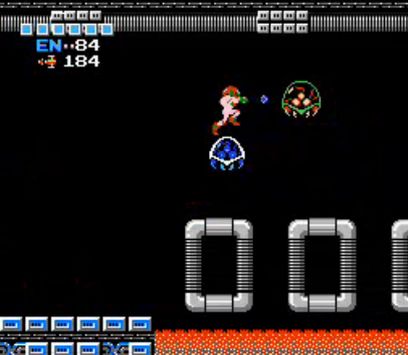 When you die, you will start back at the elevator to whatever part of the planet you’re currently on, but with your supplies depleted. You have unlimited continues, and a password system. But it’s one of THOSE password areas. The ones that need a lot of characters, and use upper and lower case letters and numbers. So, you can only imagine what a pain in the butt it must have been like when people wrote down these codes, only to screw up later by confusing if a certain character is an upper or lower case O, or a zero. And the sadder thing is the Japanese version of the game had a save feature. Now that’s just plain cruel.
When you die, you will start back at the elevator to whatever part of the planet you’re currently on, but with your supplies depleted. You have unlimited continues, and a password system. But it’s one of THOSE password areas. The ones that need a lot of characters, and use upper and lower case letters and numbers. So, you can only imagine what a pain in the butt it must have been like when people wrote down these codes, only to screw up later by confusing if a certain character is an upper or lower case O, or a zero. And the sadder thing is the Japanese version of the game had a save feature. Now that’s just plain cruel.
The game has an average difficulty. It’s not one you’ll beat on your first couple of plays, and you’ll need tons of trial and error to succeed. You’ll be able to get the hang of things quite easily, like the somewhat awkward jumping. But other than the jumping, there are really no other big issues in the controls, and no massive hit detection features to worry about. There are also no bad glitches that will break the game in terrible ways. For the first big action game of its kind, Metroid handles itself extremely well in pretty much every important department.
The big selling point of Metroid is definitely its replayablility. Not just because you will always find something new by exploring the game, but it’s also a game with multiple endings. This is a game that rewards the gamer for their speed. If you can manage to beat the game at the fastest possible time, Samus will reward you by removing the space suit to reveal that she is…
Yeah, this is common knowledge by now, but I can only imagine how many minds were blown when they first learned of this. Again, like a lot in this game, the idea for Samus to be a female protagonist was likely based on Ellen Ripley, the lead character of Alien played by Sigourney Weaver. Samus is a gaming pioneer. One of the first truly bad ass women of gaming, and it doesn’t hurt that she was in one of the best franchises of all time.
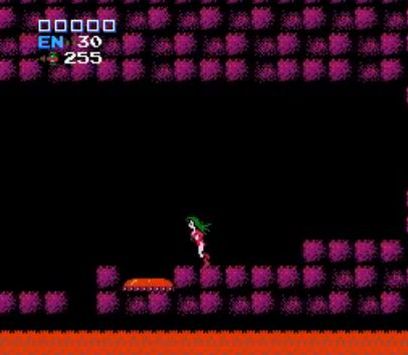 Here’s one of the more legendary NES codes. If you type in JUSTIN BAILEY in the password screen, you will start the game with a different looking Samus, who will be equipped with plenty of essential weapons in the game.
Here’s one of the more legendary NES codes. If you type in JUSTIN BAILEY in the password screen, you will start the game with a different looking Samus, who will be equipped with plenty of essential weapons in the game.
You can also use the NES Advantage to your, well… advantage. You can use the Advantage’s turbo function to screw around with the password function, and if you’re lucky you can earn a random password that can get you to any area in the game, and with a random amount of items. So whip out the advantage and see what you can get.
GRAPHICS
The graphics for Metroid are excellent. The levels are perfectly designed, and they really give off the feeling of being inside ominous and scary space caves, having to deal with alien beasts. Character sprites are all well designed and put together, and nothing ever feels out of place.
MUSIC
Metroid boast a solid soundtrack, all done by the legendary Hirokazu Tanaka. Tanaka has worked on some of Nintendo’s greatest video game soundtracks including Kid Icarus, Dr. Mario, Super Mario Land, and what I believe are some of his most diverse and incredible works, Mother 1 and 2 (Earthbound in North America). The music of Metroid doesn’t contain peppy and happy music, or super power songs. It’s dark, brooding and ominous. There are even times when the music in the game is replaced by weird sounds, and a lack of melodies. Tanaka intended for the game’s soundtrack to sound like someone exploring a living organism, and he certainly delivered on that intended idea. Very rarely does a game from this era have music that truly fits the game’s tone, and this is one of those rarities.
OVERALL THOUGHTS
Metroid is a true masterpiece on the NES. It has perfect gameplay, an amazing soundtrack, solid (though slightly annoying at times) controls, and enough of a challenge to keep you coming back for more. It’s a true pioneer game in every major aspect. It would go on to be one of Nintendo’s more popular franchises, spawning many sequels, including Super Metroid, a game that is considered by many as one of the greatest video games ever made. It started a lasting legacy, broke barriers, and most important of all, is just really fun. If you can find a copy on any platform it’s available on (including GBA and Virtual Console), give it a play and give Mother Brain the “mother” of all butt whoopings.
RATING: Thumbs Up

